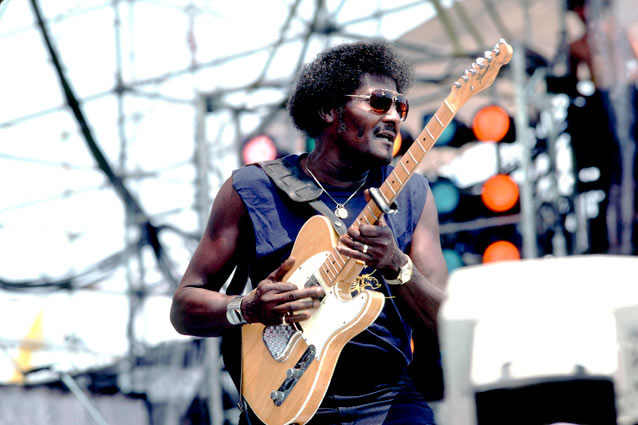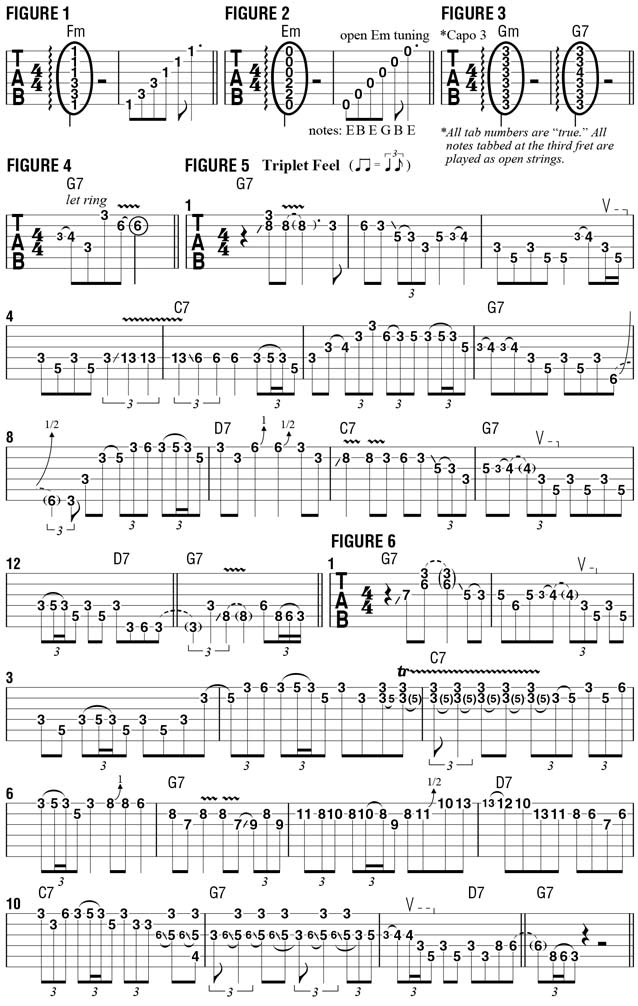The Ice Man: A Tribute toBlues Great Albert Collins

Albert Collins is a blues guitar legend.
Nicknamed the Ice Man, the Houston, Texas, ax slinger employed the “chilly” theme for the titles of many of his most celebrated songs, such as “The Freeze,” “Frosty,” “Thaw Out,” “Snow Cone,” “Don’t Lose Your Cool” and “Ice Pick,” and the album titles Ice Pickin’ and Frostbite.
I had the great fortune and honor to get to know Albert and perform with him on one very memorable occasion. He was a warm and wonderful man who was well loved by his band and always deeply engaged with his fans.
Born Albert Gene Drewery on October 1, 1932, Collins—who died of cancer at the age of 61 on November 24, 1993—was introduced to the guitar by his cousin Lightnin’ Hopkins and taught to play by another cousin, Willow Young, using an unconventional open F minor tuning in conjunction with a capo.
An early influence was Clarence “Gatemouth” Brown, who also employed a capo. Albert adopted the same instrument as Gatemouth, a Fender Esquire, with which he cut his early records. He later switched to his signature "maple cap"–necked, natural ash body 1966 Fender Telecaster, equipped with a Gibson humbucking pickup in the neck position, though he utilized the bridge pickup most of the time.
FIGURE 1 illustrates a first-position Fm chord. To attain an open tuning that replicates this sound, the sixth, third, second and first strings are raised one half step, and the fifth and fourth strings are raised one and a half steps. For this lesson, I’m using open E minor tuning instead of F minor. The structure of both tunings is the same, but it’s easier and more convenient to get in and out of open E minor tuning. As shown in FIGURE 2, simply raise your A and D strings up a whole step to B and E, respectively. The resulting tuning is, low to high, E B E G B E.
With a capo placed at the third fret, strumming across all six open strings sounds a Gm chord (see FIGURE 3). If we fret the third string one fret above the capo with the index finger, a G major chord sounds. (All tab numbers shown here are “true.” Notes tabbed at the third fret are played “open,” and the other numbers reflect the actual frets). FIGURE 4 illustrates a G7 arpeggio along the lines of Albert’s approach.
FIGURES 5and 6 offer examples of soloing in Albert’s style in the context of a swinging 12-bar blues. FIGURE 5 begins with unison G notes on the top two strings. On beat four of bar 3, I use a reverse rake to quickly descend the third, fourth and fifth strings. Albert always picked with his bare fingers, but this technique can also be achieved with a pick.
Notice in both examples the frequent use of open strings and allow them to ring together. Collins phrased his licks in a very distinct manner, and one of his signature techniques is demonstrated in bars 4 and 5 of FIGURE 6, as fast trills are sounded between the fifth of G, D and the sixth, E.
Be sure to listen to the live version of “Frosty” from Frozen Alive! to experience the full breadth of Albert’s musical inventiveness. It's at the very bottom of this story.

Get The Pick Newsletter
All the latest guitar news, interviews, lessons, reviews, deals and more, direct to your inbox!
Guitar World Associate Editor Andy Aledort is recognized worldwide for his vast contributions to guitar instruction, via his many best-selling instructional DVDs, transcription books and online lessons. Andy is a regular contributor to Guitar World and Truefire, and has toured with Dickey Betts of the Allman Brothers, as well as participating in several Jimi Hendrix Tribute Tours.










![Joe Bonamassa [left] wears a deep blue suit and polka-dotted shirt and plays his green refin Strat; the late Irish blues legend Rory Gallagher [right] screams and inflicts some punishment on his heavily worn number one Stratocaster.](https://cdn.mos.cms.futurecdn.net/cw28h7UBcTVfTLs7p7eiLe.jpg)
